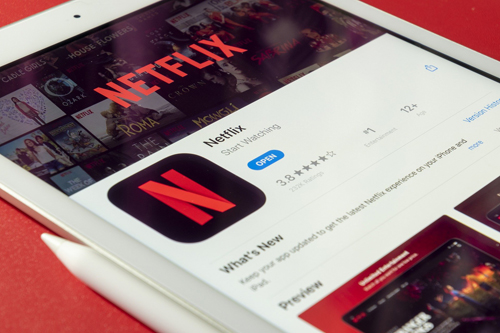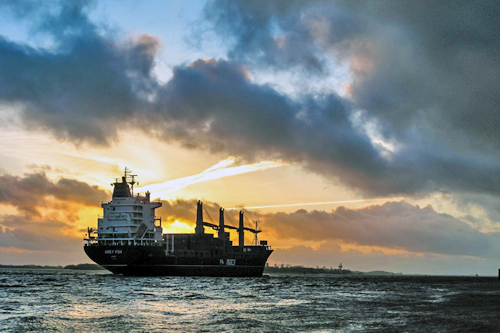If we’re certain of anything, it’s that an early spring might cheer us all up! Today, in the grand Groundhog Day tradition, all eyes will be on the town of Punxsutawney, Pennsylvania to see what Phil’s shadow will reveal. Are we looking at a repeat of 2020 or a brighter 2021?
We thought that, to coincide with SSPI Luxembourg and SSPI UK’s Groundhog Day 2021: What will the Future Bring webinar, happening today at 12pm GMT we’d also bring out our very own ‘Phils’, Andrew Faiola, Head of Mobility, Koen Willems, Head of International Government Satcom and Hans Massart, Head of Media and Broadcast to get their perspective on what we can expect for 2021.
Andrew Faiola on Maritime
2020 was a mixed bag for Maritime, but the headline buzz around “no sail” rules, travel corridors, and the crew crisis only told part of the story. It became certain that the pandemic would not be over before a vaccine was available, so that helped to set a certain (low) level of expectation. 2021 is already looking more optimistic with vaccine rollouts beginning, better treatment regimes, and improving economies. However, I believe this masks what might be even greater uncertainty and turbulence during the course of the year.
Large variations in vaccine progress between countries, layers of intersecting, uncoordinated, and bureaucratic travel restrictions, testing requirements, and quarantine rules mean that while there is light at the end of the tunnel, I expect a number of bumps along the way. The hard-hit Passenger segment will slowly return to life, but we continue to see announcements from different cruise lines extending delays to their return to sailing, and it is likely to remain a shadow of its former self until 2022.
The Offshore segment was already traumatized by low oil prices, and while those have recovered somewhat, the segment is still in the midst of a general restructuring. The Leisure segment continues to grow and, in some cases, actually benefitted from increased demand from people fortunate enough to be able to isolate on-board their yachts—this will most likely continue.
I’m most optimistic about the Merchant and Fishing segments. While the Merchant segment as a whole still has structural economic issues to overcome, the pandemic also acted as a catalyst, forcing organizations to look at how to remotely access information, conduct work in the field, automate activities, and exchange documentation. The result is that a number of long-overdue digitalization initiatives will increasingly require always-on real-time access to data on the vessel and onshore. There is also an ongoing humanitarian crisis amongst crew that must be resolved by acknowledging that they are key workers, prioritizing them for vaccinations, and expediting crew rotations.
Continued and improved access to connectivity for crew is imperative. The Fishing segment has long been unable to take advantage of many of the advancements in connectivity, often due to cost, size, and complexity of the equipment. But increasing regulatory reporting requirements, the need to provide better crew welfare solutions, and the advent of a number of technology improvements from ST Engineering iDirect and its partners mean that this segment is also poised for growth.
Will 2021 be a repeat of 2020? Certainly not! There will clearly be challenges, and some continued headwinds, but the clever navigators will be in position for the wind to catch their sails as the heavy weather of the pandemic starts to clear.
Hans Massart on Broadcast

However, the lull in live sports gave SNG operators and broadcasters a great opportunity to consider how implementing a multiservice capability into their vans can transform and revitalize their SNG fleet. As a result of the advent of IP and the internet, broadcasters can utilize a mix of technologies to create multiservice communications links. The key to all-IP newsgathering is successful transmission, with satellite at the heart of this. This flexibility is easy for broadcasters to achieve and the move to all-IP is something that I think we will see a lot of in 2021.
The pandemic did bring opportunity in terms of the distribution of content and the skyrocketing popularity of streaming services. As people on every continent have dealt with the effects of the COVID-19 lockdown, faced with months of isolation, the go-to entertainment solution has been video, and this has been reflected in a sharp rise in subscriptions. Studios released new movies via OTT services. In some parts of the world OTT has overtaken traditional pay TV. But with demand burgeoning in every region, how do telcos and service providers ensure they can satisfy demand by reaching new subscribers and deliver a high quality of experience (QoE)?
In order to extend reach and assure a wrinkle-free service, providers will need to look beyond traditional methods of connectivity. Ongoing innovation and technological advancement will be required to meet the growing expectations for exceptional video quality and performance.
Satellite can feed the Content Delivery Network (CDN) with multicast content towards the network edge where it is then converted to unicast. This helps to reduce buffering as the CDN can have a finer granularity while addressing a large population, with high quality video. It can also scale rapidly and cost effectively, provide critical educational links and it’s not bound by geographical constraints.
As we move into a more converged era with new and emerging technology and a need to take connectivity to people everywhere, satellite has a critical part to play in a wider OTT ecosystem.
After the most challenging of years for the broadcast sector, I’m positive that we can look forward to a much brighter 2021 – and an evolving role for satellite.
Koen Willems on Government and Defense

Here ST Engineering iDirect, we’ve seen how military networks are getting increasingly complex, more dispersed but still need to be highly secure and resilient. The military is a big user of satellite communications and the environments where they operate are multi-faceted. The next generation of space technology, or Space 2.0 offers a myriad of benefits for military users such as instant situational awareness, real time intelligence and the agility to change networks and tactics to the situation at hand. These are all key to obtaining strategic and operational advantage.
We’re going to see a lot more networking of assets in the field with soldiers equipped with sensor technology and an increased use of IoT so that problems can be detected and acted upon rapidly. But with all this data flowing, we need to make sure it’s exchanged as efficiently as possible. High Throughput Satellites (HTS) in multiple orbits, the Military Internet of Things (IoT), M2M, 5G and also edge computing, where exchanging and processing of local data may be facilitated without passing on to a central hub, are all coming together to enable a high-tech combat force. These new services and technologies must all be orchestrated, and resources allocated in a flexible, agile and secure way in order to gain the desired outcome – an operational advantage over the adversary.
This can be realized through a fully integrated approach, encompassing multiple layers of security and resiliency to facilitate seamless operation, maximize end-user experience and information assurance. In 2021, we’ll be focused on the four pillars that will make this happen: Detect, Mitigate, Prevent and Predict.
Here’s to an altogether more positive 2021!

